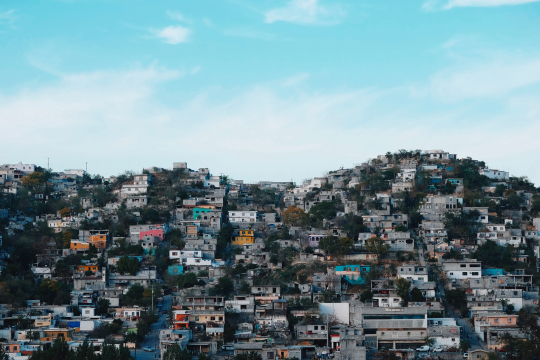Long-term exposure to air pollution has a significant link to COVID-19 related mortality. Four Latin American countries have been studied by comparing satellite-based data with official statistics on COVID-19 related mortality. Meet one of the researchers, Jorge A. Bonilla, and hear his comments on the results!
There are already other studies on air pollution and COVID-19, so why did you want to study this topic?
Previous studies have mostly focused on developed countries. We wanted to study Latin America because this region has been very badly affected by the pandemic. Even though many cities imposed hard lock-downs we had one of the highest mortality rates in the world. Also, air pollution is the biggest environmental hazard in Latin America.
We wanted to provide decision-makers with facts and figures that they can use as a foundation for policies to address those problems.
What exactly did you study?
We combined satellite-based data of average fine particulate matter (PM2.5) concentrations from four countries; Brazil, Chile, Colombia, and Mexico over the period 2000-2018, with official statistics on COVID-19 related deaths to analyze the association between long-term air pollution exposure and mortality. We also considered socioeconomic variables that may affect COVID-19 deaths such as population age distribution, pre-existing health conditions, among other factors.
What were your results?
You can measure exposure to air pollution as micrograms of fine particles per cubic meters, µg/m3. We found that an increase in the long-term exposure by 1 µg/m3 is related to a 2.7 percent increase in the COVID-19 mortality rate.
This relationship is strongest in metropolitan areas, where air pollution levels are high and often exceed the recommendations from the World Health Organization, WHO.
Was there anything surprising in those results?
Yes, we did expect there to be a correlation between air pollution and COVID-19-related deaths, but such correlation was mainly dominated by metropolitan areas that exhibit the highest level of pollution. It reinforces the need of complying with the WHO standard, which was suggested more than a decade ago.
You mentioned the “inequality factor” in the study. What do you mean by that?
We didn’t study factors such as income levels, but Latin America has one of the most unequal income levels in the world. Inequality may worsen COVID-19 infection. People look for income sources in the informal labor force. In Colombia, about 60 percent of the population are working within the informal labor force, for instance, they sell food, clothes, or other products in the streets, and have no social safety net whatsoever. The income needs may make the mobility restrictions less effective because household members leave their homes during the lockdowns. Inequality also adds more challenges. A recent study in Bogota indicates that air-quality inequality is at least as high as social and economic inequality and that these three dimensions of inequality may overlap in the same places, particularly where the population is very vulnerable. Thus, inequality should be taken into account when you consider policies to address the problems related to COVID-19 and air pollution.
What is your advice to policymakers, based on your study?
First of all, it’s really urgent to convince the citizens, the congress, and all kinds of stakeholders that we need to tackle the air pollution problem. It’s not easy, there are so many needs and always a lack of money. But it is important to prioritize this and push more investments towards reducing air pollution. And we have those challenges in common in Latin America and should work together to address them.
Secondly, the health care sector has to be included in the discussions. If we can channel extra health care capacity to the most polluted areas, we could mitigate the effects of the pandemic too.
And thirdly, we have to develop cross-sectional policies to be better prepared for future pandemics. We can’t just act when pollution levels are high - air quality alerts, lock-downs, and restricting car use based on license plate numbers, etcetera, because these policies may not be enough. We need to design and implement long-term policies.
Read the report Long-Term Air Pollution Exposure and COVID-19 Mortality in Latin America
Facts:
PM2.5 means fine particulate matter with a diameter of 2.5 micrometers or less.
The World Health Organization, WHO’s guideline for maximum annual average concentrations of PM2.5 is currently set at 10 µg/m3. Only 4 out of 57 major cities in Latin America have concentrations below that. Bogotá, Mexico City, Santiago, and Sao Paolo have shown concentrations more than six times above that figure.
A typical source of PM2.5 is diesel exhaust.
By: Petra Hansson

